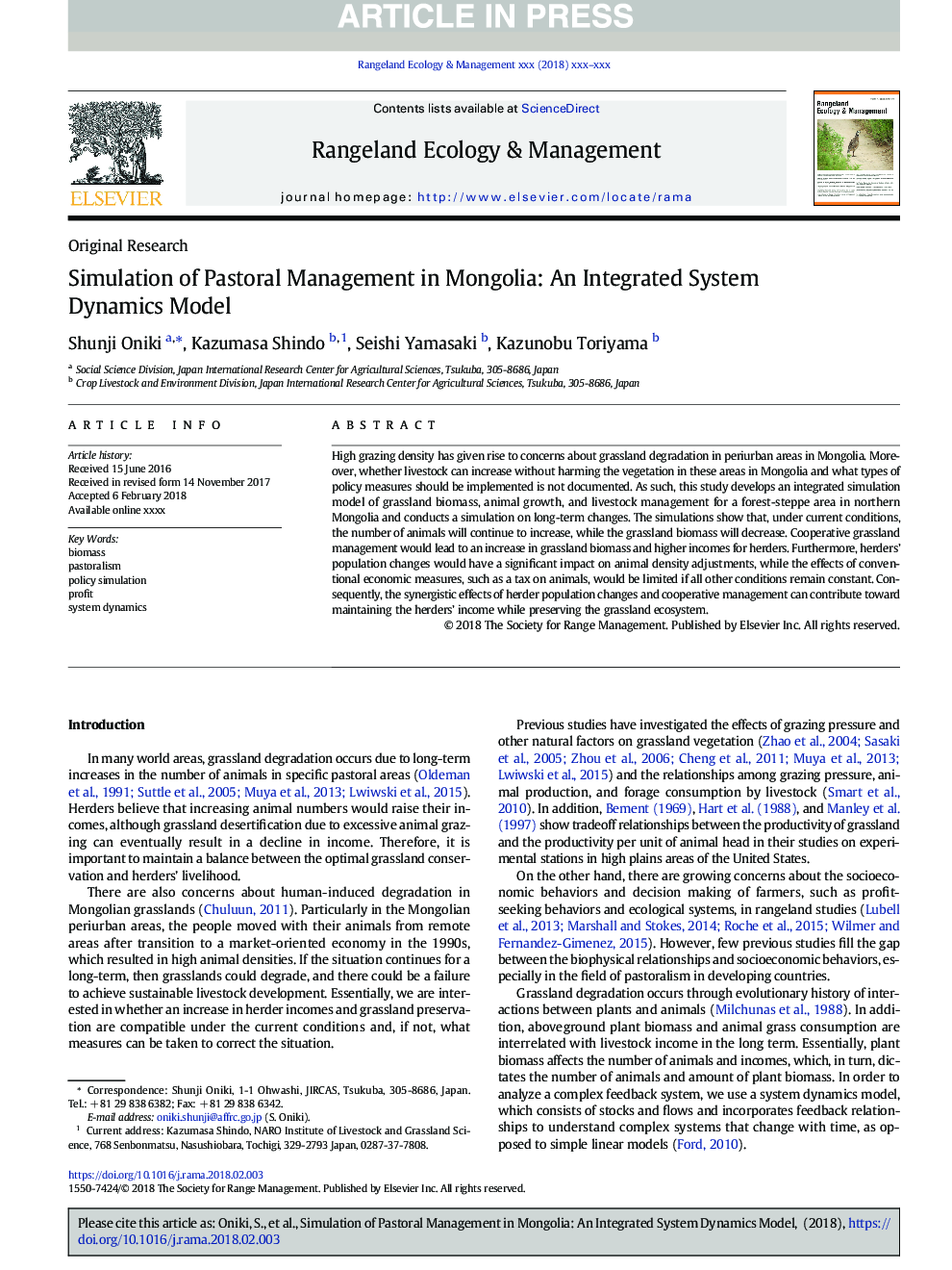| Article ID | Journal | Published Year | Pages | File Type |
|---|---|---|---|---|
| 8849609 | Rangeland Ecology & Management | 2018 | 12 Pages |
Abstract
High grazing density has given rise to concerns about grassland degradation in periurban areas in Mongolia. Moreover, whether livestock can increase without harming the vegetation in these areas in Mongolia and what types of policy measures should be implemented is not documented. As such, this study develops an integrated simulation model of grassland biomass, animal growth, and livestock management for a forest-steppe area in northern Mongolia and conducts a simulation on long-term changes. The simulations show that, under current conditions, the number of animals will continue to increase, while the grassland biomass will decrease. Cooperative grassland management would lead to an increase in grassland biomass and higher incomes for herders. Furthermore, herders' population changes would have a significant impact on animal density adjustments, while the effects of conventional economic measures, such as a tax on animals, would be limited if all other conditions remain constant. Consequently, the synergistic effects of herder population changes and cooperative management can contribute toward maintaining the herders' income while preserving the grassland ecosystem.
Related Topics
Life Sciences
Agricultural and Biological Sciences
Agricultural and Biological Sciences (General)
Authors
Shunji Oniki, Kazumasa Shindo, Seishi Yamasaki, Kazunobu Toriyama,
